reinforcement scores
Below is given the plot of effect-sizes of reinforcement of 30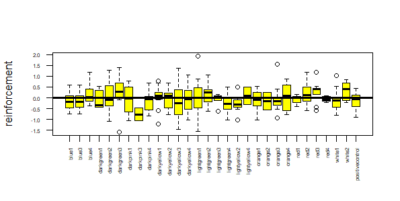 genotypes. On the y-axis are the PI values for learning effect sizes. These scores are calculated by taking the average of PI values of training periods and then subtracting pretest PI values from it.
genotypes. On the y-axis are the PI values for learning effect sizes. These scores are calculated by taking the average of PI values of training periods and then subtracting pretest PI values from it.
Reinforcement scores = mean of training score – pretest PI score
wiggle difference
Below is a plot of all the flies of 18 genotypes for the wiggle difference. This is calculated by taking the sum of the difference of the tracepoint for each step. Thus, wiggle = sum(difference in tracepoint at each step). This is done for the entire 20 minutes time.
NOTE: The flies have not yet been separated into 2 categories based on pretest values.
Now we wanted to measure the difference in on wiggle and off wiggle. On wiggle is the wiggle for when the fly was in the part which is supposed to have light on and similarly off wiggle is the wiggle when light is supposed to be off(that is in the portion in which we want to train it to be in). So below is the difference of on wiggle and off wiggle i.e – on wiggle – off wiggle:-
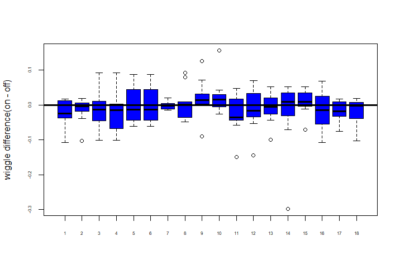
mean of this wiggle difference :-
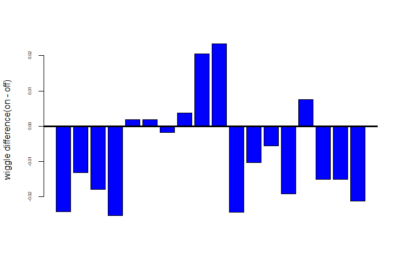
reinforcement(without subtracting pretest)
Below is given the plot of effect-sizes of reinforcement of 18 genotypes. On the y-axis are the PI values for learning effect sizes and this is without subtracting the pretest (without normalizing). These scores are calculated by taking the average of PI values of training periods. We are just comparing reinforcement without normalizing with the previous post showing graphs after subtraction of pretest PI’s.
Reinforcement(without normalizing) = mean of training PI values.

reinforcement(after subtracting pretest)
Below is given the plot of effect-sizes of reinforcement of 18 genotypes. On the y-axis are the PI values for learning effect sizes. These scores are calculated by taking the average of PI values of training periods and then subtracting pretest PI values from it.
Reinforcement scores = mean of training score – pretest PI score
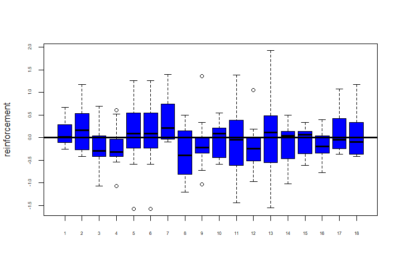
Now below are the mean values of the reinforcements calculated for these 18 genotypes
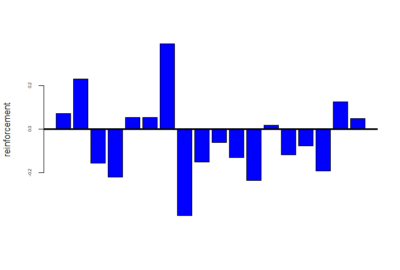
wiggle
Below is a plot of all the flies of 11 genotypes for the wiggle difference. This is calculated by taking the sum of the difference of the tracepoint for each step. Thus, wiggle = sum(difference in tracepoint at each step). This is done for the entire 20 minutes time.
Now we wanted to measure the difference in on wiggle and off wiggle. On wiggle is the wiggle for when the fly was in the part which is supposed to have light on and similarly off wiggle is the wiggle when light is supposed to be off(that is in the portion in which we want to train it to be in). So below is the difference of on wiggle and off wiggle i.e – on wiggle – off wiggle:-
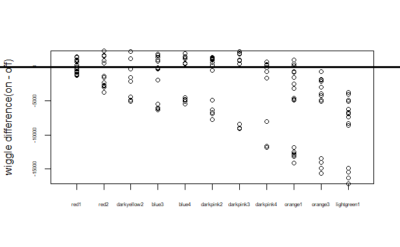
Now means of the difference in wiggle:-
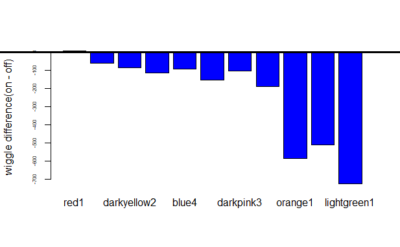
reinforcement(plot)
Below is given the plot of effect-sizes of reinforcement of 11 genotypes. On the y-axis are the PI values for learning effect sizes. These scores are calculated by taking the average of PI values of training periods and then subtracting pretest PI value from it. 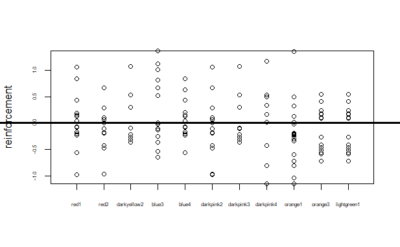
Reinforcement scores for 8 genotypes
We wanted to measure learning and reinforcement in the flies for eight genotypes that we have tested as of now. For calculating the reinforcement scores we took the average of the two training periods combined PI scores and then subtract the PI value of the pretest period.
Reinforcement = average (combined training PI) – (combined pretest PI)
Below is the boxplot of the effect size for each fly for all these genotypes:-
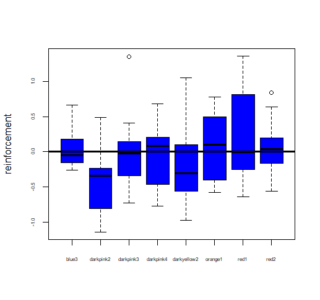
We then calculated the mean of these reinforcement values for each of the screens and below is a bargraph for these means:-
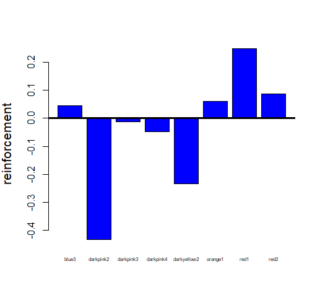
orange1(genotype)-PI Barplot
Our experiments are performed after blinding ie we do not know the genotype of the flies tested. Code for this line is Orange1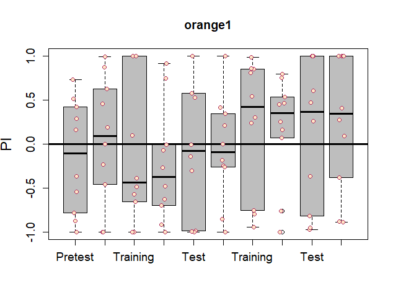 . Intensity was approximately 400 Lux. The frequency of yellow light was 20Hz with 50:50 duty cycle.
. Intensity was approximately 400 Lux. The frequency of yellow light was 20Hz with 50:50 duty cycle.
Red 1 Genotype
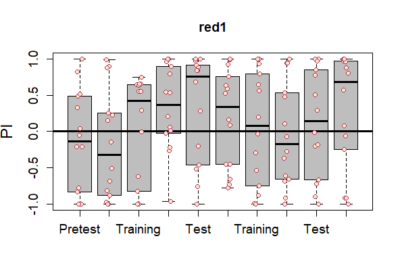
The platform experiment was done with us being blinded. We referred to the genotype as the Red1 Genotype. The light intensity was taken as approximately 400 lux as was decided by previous experiments. The duty cycle was 50:50 at a frequency of 20 Hz.

Calibration(of different units of intensity) for Tmaze and Joystick platform
- For the Joystick experiment – We continuously varied the light intensity at the tip of the optical fibre and measured it using the Lux meter at first and then in mW/cm^2. Then both these readings were taken down and the best fit was generated which depicted the measured fit. Now a theoretical fit was also generated and plotted. This is given below
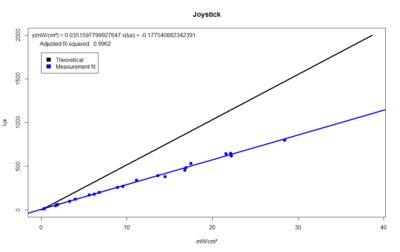
- We also did the best fit for the Tmaze experimental setup. We measured the light intensity on both sides of the chamber in between and took the average of it.
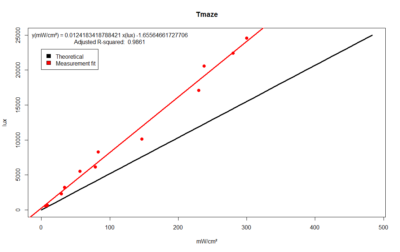
- The Information for plotting the theoretical fit was obtained from here: https://www.dfisica.ubi.pt/~hgil/Fotometria/HandBook/ch07.html
## 1 Watt = 517.031 lm at 590 nm
## 1 lux = 1 lm/m2
## Therefore: 517.031 lux = 517.031 lm/m2 = 1 Watt/m2 = 1000mW/mm2 = 10mW/cm2